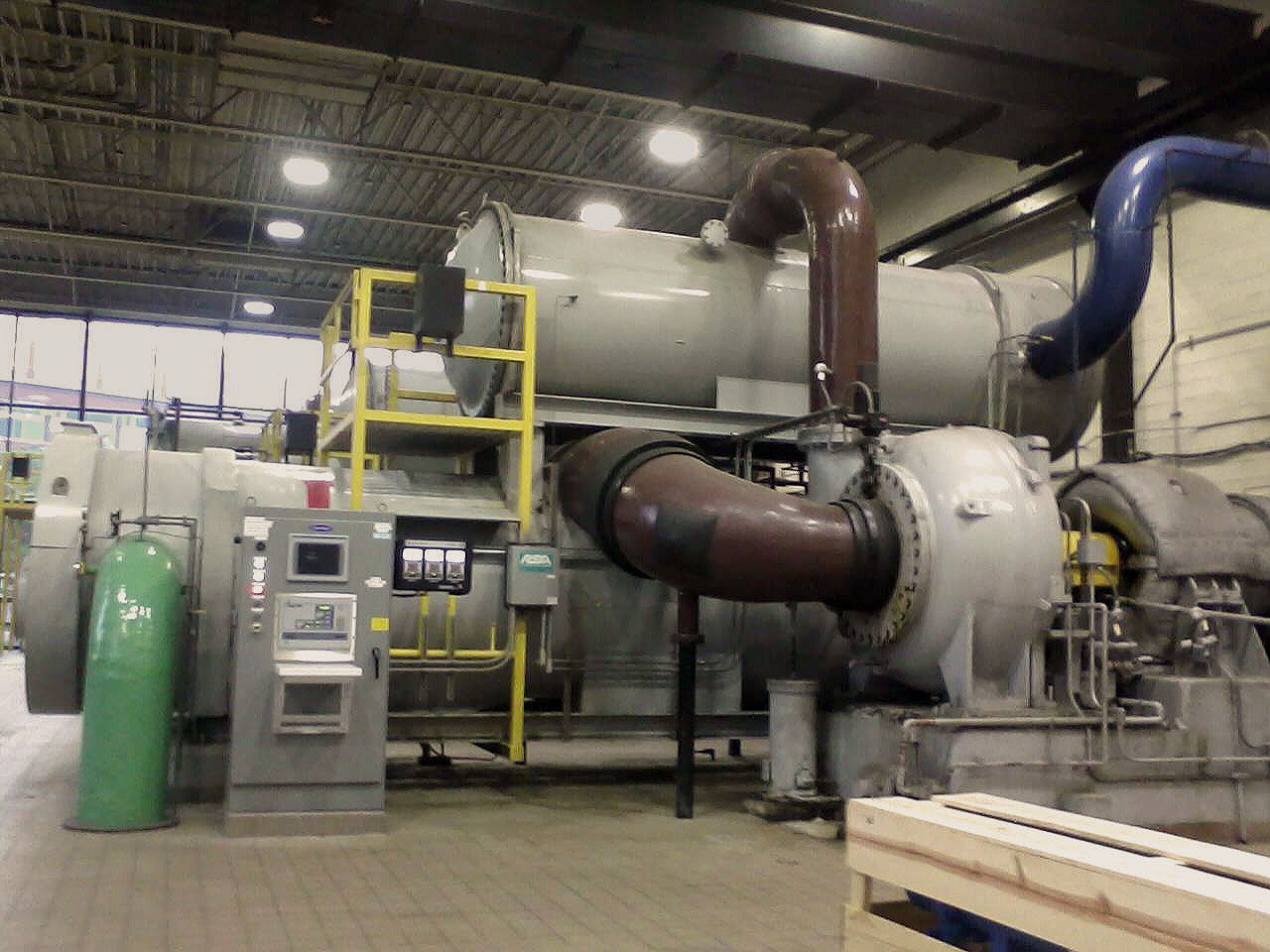The Central Utilities Plant was originally built in 1970 and has been an integral part of the University for over 40 years now. The plant provides steam, electricity, hot water, and chilled water to the University of Rochester campus. With the construction of the Saunders Research Building in 2011, the University sought to eliminate all of its processes of chlorofluorocarbons (CFCs) in order to achieve LEED certification from the U.S. Green Building Council. Now, the Central Utilities Plant as well as the Middle Campus Chiller Plant have followed through with that goal for the benefit of the entire University.
The central plant consists of four chillers which previously used refrigerants made up of CFCs to provide its services to the University. Previously, Chillers 2, 3, and 4 were using the refrigerant R-12, also known as CFC-12. CFCs are harmful because they release chlorine into the atmosphere which contributes to the destruction of the ozone. Instead of replacing all of the chillers with new machines, the original ones were retrofitted in order to save money and gain a higher efficiency which Director of Utilities and Energy Management Steve Mischissin calls a “win-win situation.” Chiller 4 was the first chiller to become CFC free in 2001.
Chiller 2 was retrofitted in 2012 and Chiller 3 in 2014. Central Utilities worked with Carrier and EOS Climate, Inc. in order to retrofit the two chillers. Carrier provided the refurbishment of the chillers and the steam turbine drives. This included adding a new control system, re-tubing of the heat exchangers, division plate modification, and the replacement of the steam turbine drive rotor and diaphragms. EOS helped to environmentally remove the old R-12 refrigerant and the chillers were retrofitted using R-134a, which causes no ozone depletion. EOS also took responsibility for the old CFC-based refrigerants and safely destroyed them so that they didn’t cause any emissions.
Earlier this year, Chiller 1, which was still using the refrigerant R-11 (an even more destructive CFC than R-12), was removed completely. Copper and cast iron components were salvaged from the chiller and recycled, which actually brought in almost enough money to pay for the removal itself. After this project was completed, the University’s chilling system finally became completely CFC free.
In addition to being free of CFCs, the Middle Campus Chiller Plant (MCCP) has been put into free cooling mode during cooler weather. This method takes advantage of the low ambient air temperatures to assist in cooling the chilled water without having to run chillers and consume steam or electric power. This uses two of the new cooling towers and a new plate and frame heat exchanger to generate chilled water without any mechanical compression. This process enables all chillers to be shut off and the MCCP is able to solely supply both the Medical Center and River Campus with cooling during the winter months.
Overall, Central Utilities has made many energy-conscious updates throughout recent years which are limited not only to these projects but also include updated LED lighting, installing premium efficiency electric motors and variable speed drives in order to save energy, increase the efficiency of the plant and reduce the University’s impact on the environment.
Written by Mariah Greico, Class of 2018

